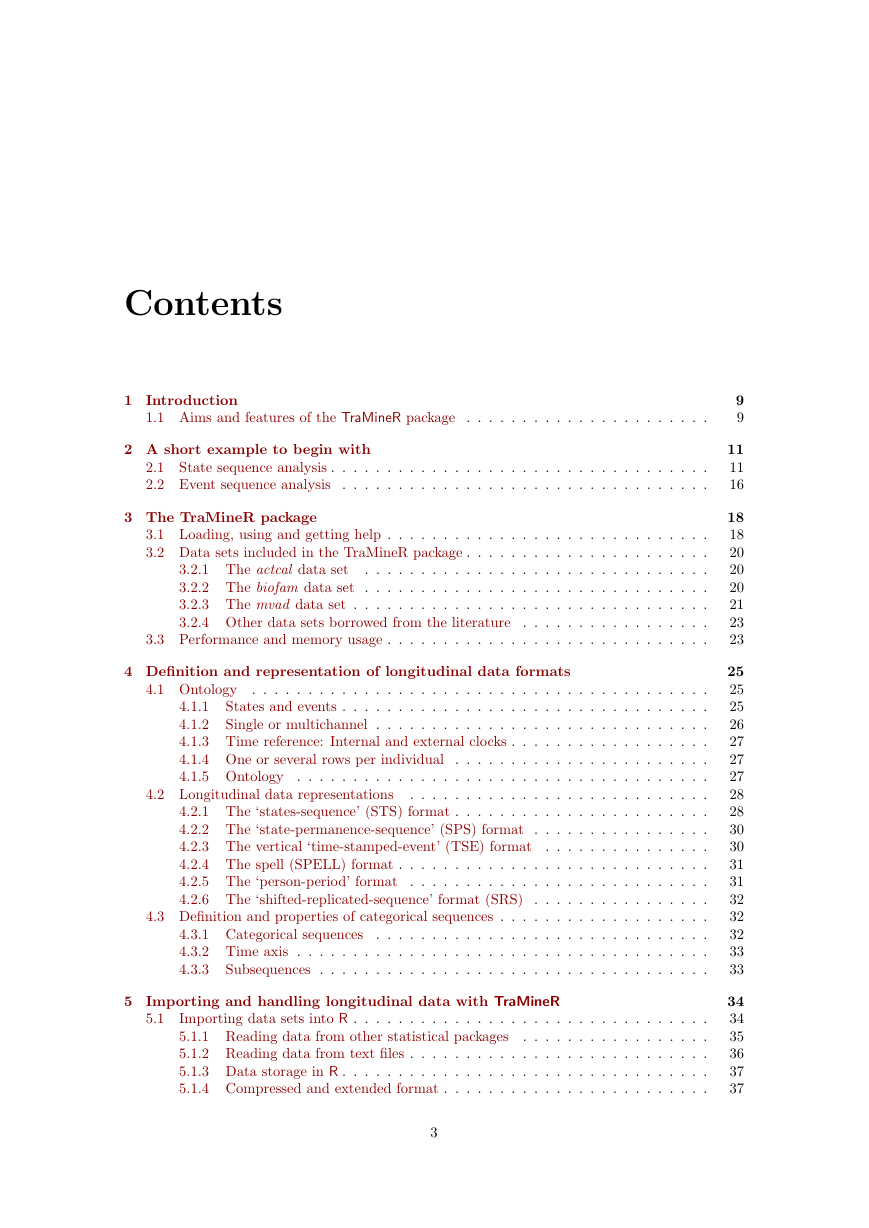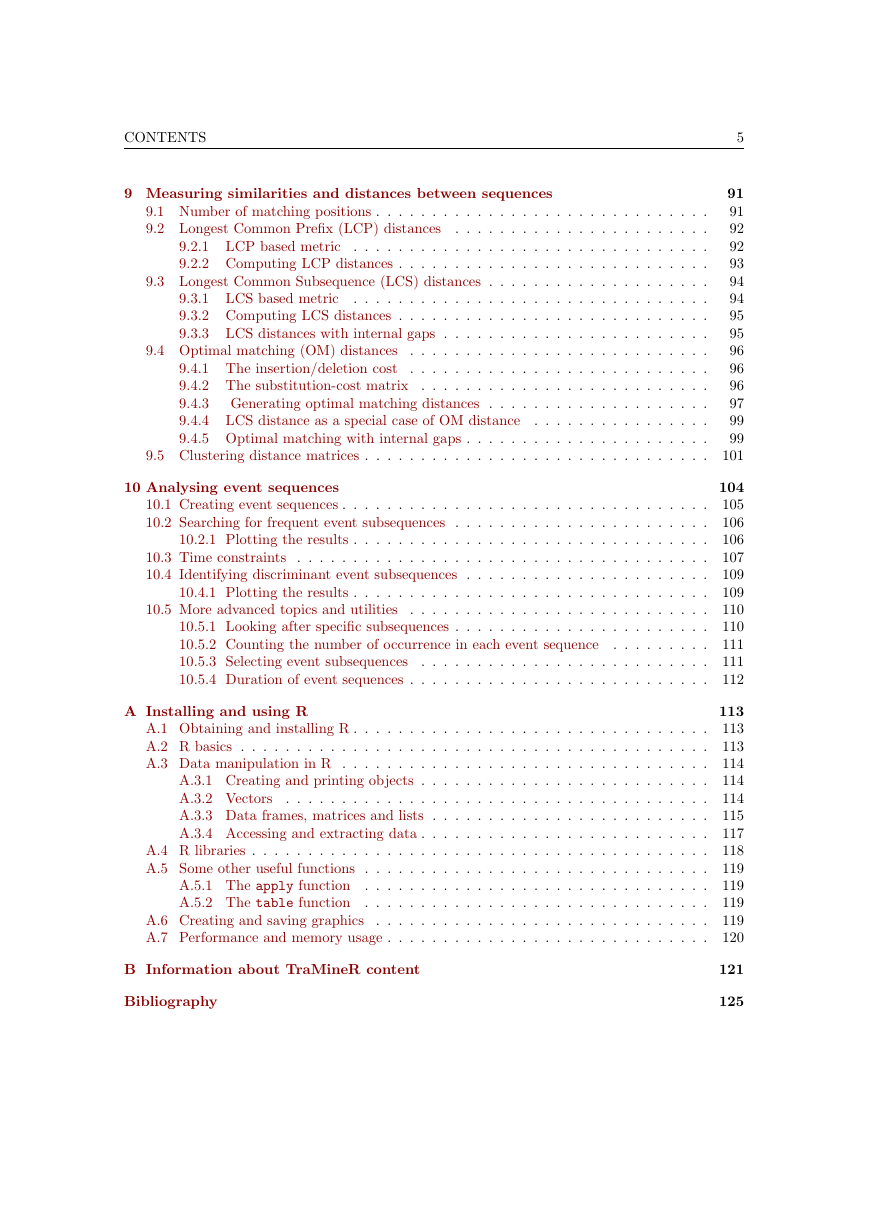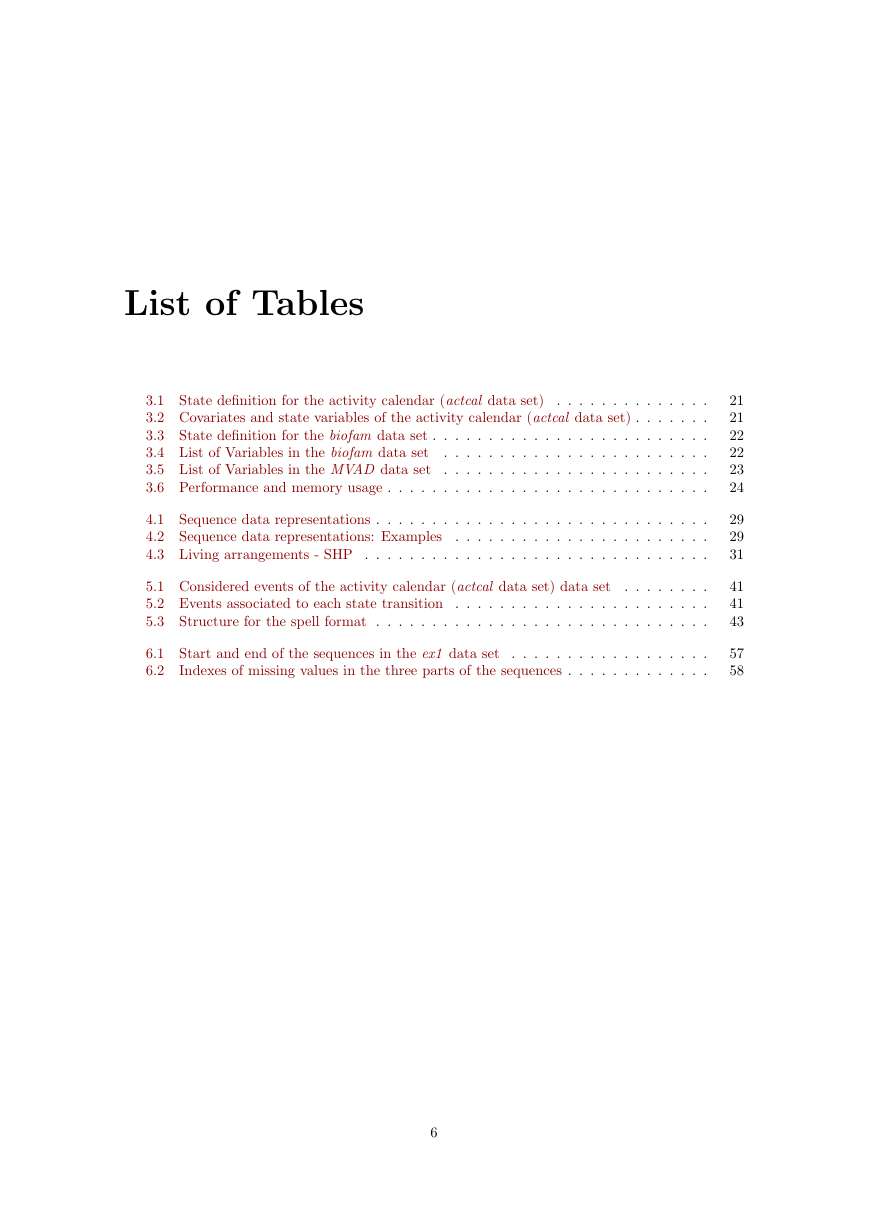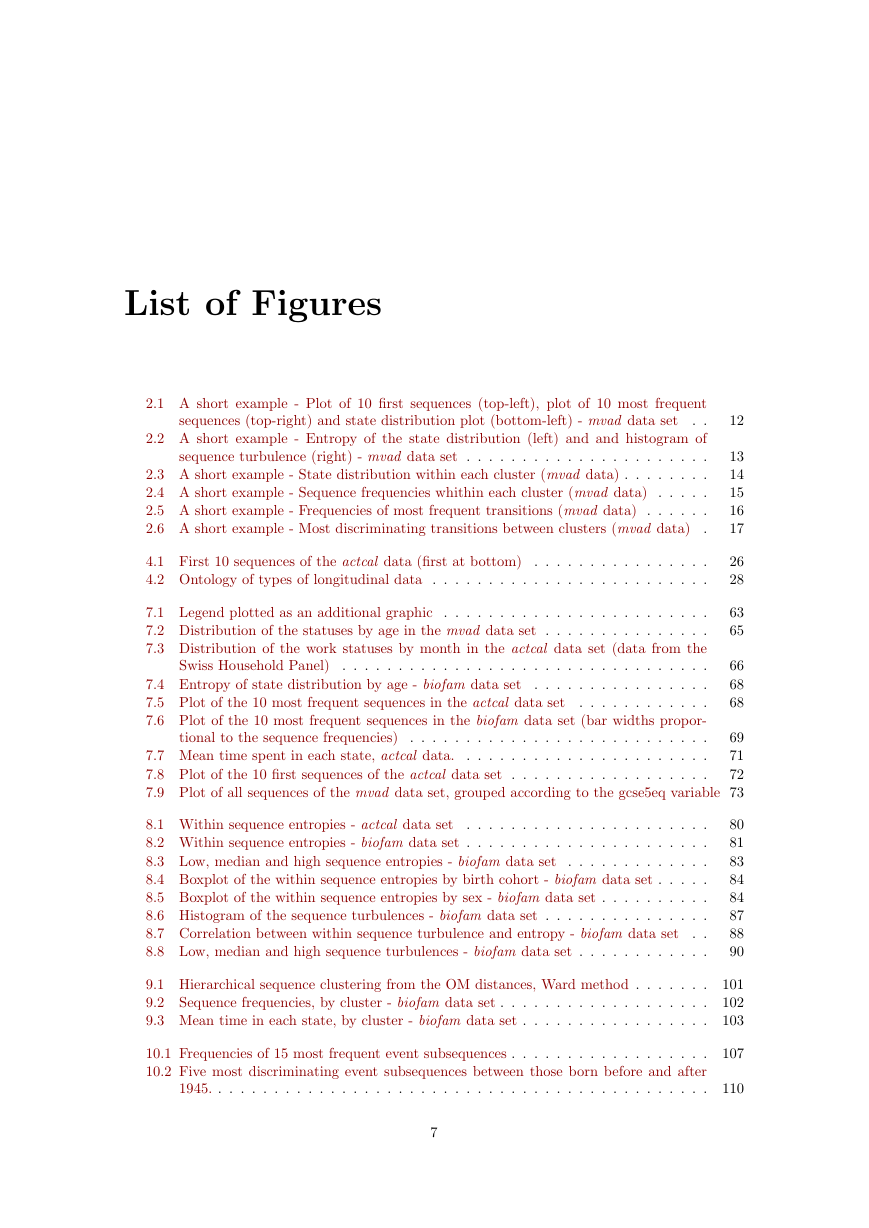Introduction
Aims and features of the TraMineR package
A short example to begin with
State sequence analysis
Event sequence analysis
The TraMineR package
Loading, using and getting help
Data sets included in the TraMineR package
The actcal data set
The biofam data set
The mvad data set
Other data sets borrowed from the literature
Performance and memory usage
Definition and representation of longitudinal data formats
Ontology
States and events
Single or multichannel
Time reference: Internal and external clocks
One or several rows per individual
Ontology
Longitudinal data representations
The `states-sequence' (STS) format
The `state-permanence-sequence' (SPS) format
The vertical `time-stamped-event' (TSE) format
The spell (SPELL) format
The `person-period' format
The `shifted-replicated-sequence' format (SRS)
Definition and properties of categorical sequences
Categorical sequences
Time axis
Subsequences
Importing and handling longitudinal data with TraMineR
Importing data sets into R
Reading data from other statistical packages
Reading data from text files
Data storage in R
Compressed and extended format
Converting between formats
Converting between compressed and extended formats
The seqformat function
Creating state sequence objects
Creating a state sequence object
Creating a sequence object from SPS-formatted data
Creating a sequence object from SPELL-formatted data
Attributes of sequence objects
State codes
Alphabet
Color palette
State labels
Starting time
Summarizing sequence objects
Indexing and printing sequence objects
Truncations, gaps and missing values
Introduction
Handling the different kinds of missing values
Describing and visualizing state sequences
General principle of TraMineR sequence plots
Color palette representing the states
Plotting the legend separately
Describing and visualizing sequence data sets
List of states present in sequence data
State distribution
Sequence frequencies
Transition rates
Mean time spent in each state
Describing and visualizing individual sequences
Visualizing individual sequences
Finding sequences with a given subsequence
Sequence characteristics and associated measures
Basic sequence characteristics
Sequence length
Distinct states and durations
Summarizing the DSS
Number of subsequences
Number of transitions
Summarizing state durations
Variance of the state durations
Cumulated state durations
Within sequence entropy
Composite measures of sequences complexity
Sequence turbulence
Measuring similarities and distances between sequences
Number of matching positions
Longest Common Prefix (LCP) distances
LCP based metric
Computing LCP distances
Longest Common Subsequence (LCS) distances
LCS based metric
Computing LCS distances
LCS distances with internal gaps
Optimal matching (OM) distances
The insertion/deletion cost
The substitution-cost matrix
Generating optimal matching distances
LCS distance as a special case of OM distance
Optimal matching with internal gaps
Clustering distance matrices
Analysing event sequences
Creating event sequences
Searching for frequent event subsequences
Plotting the results
Time constraints
Identifying discriminant event subsequences
Plotting the results
More advanced topics and utilities
Looking after specific subsequences
Counting the number of occurrence in each event sequence
Selecting event subsequences
Duration of event sequences
Installing and using R
Obtaining and installing R
R basics
Data manipulation in R
Creating and printing objects
Vectors
Data frames, matrices and lists
Accessing and extracting data
R libraries
Some other useful functions
The apply function
The table function
Creating and saving graphics
Performance and memory usage
Information about TraMineR content
Bibliography
















 2023年江西萍乡中考道德与法治真题及答案.doc
2023年江西萍乡中考道德与法治真题及答案.doc 2012年重庆南川中考生物真题及答案.doc
2012年重庆南川中考生物真题及答案.doc 2013年江西师范大学地理学综合及文艺理论基础考研真题.doc
2013年江西师范大学地理学综合及文艺理论基础考研真题.doc 2020年四川甘孜小升初语文真题及答案I卷.doc
2020年四川甘孜小升初语文真题及答案I卷.doc 2020年注册岩土工程师专业基础考试真题及答案.doc
2020年注册岩土工程师专业基础考试真题及答案.doc 2023-2024学年福建省厦门市九年级上学期数学月考试题及答案.doc
2023-2024学年福建省厦门市九年级上学期数学月考试题及答案.doc 2021-2022学年辽宁省沈阳市大东区九年级上学期语文期末试题及答案.doc
2021-2022学年辽宁省沈阳市大东区九年级上学期语文期末试题及答案.doc 2022-2023学年北京东城区初三第一学期物理期末试卷及答案.doc
2022-2023学年北京东城区初三第一学期物理期末试卷及答案.doc 2018上半年江西教师资格初中地理学科知识与教学能力真题及答案.doc
2018上半年江西教师资格初中地理学科知识与教学能力真题及答案.doc 2012年河北国家公务员申论考试真题及答案-省级.doc
2012年河北国家公务员申论考试真题及答案-省级.doc 2020-2021学年江苏省扬州市江都区邵樊片九年级上学期数学第一次质量检测试题及答案.doc
2020-2021学年江苏省扬州市江都区邵樊片九年级上学期数学第一次质量检测试题及答案.doc 2022下半年黑龙江教师资格证中学综合素质真题及答案.doc
2022下半年黑龙江教师资格证中学综合素质真题及答案.doc